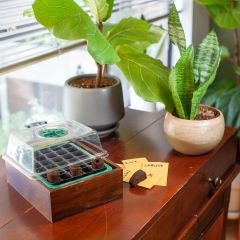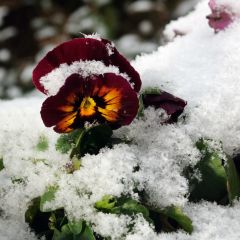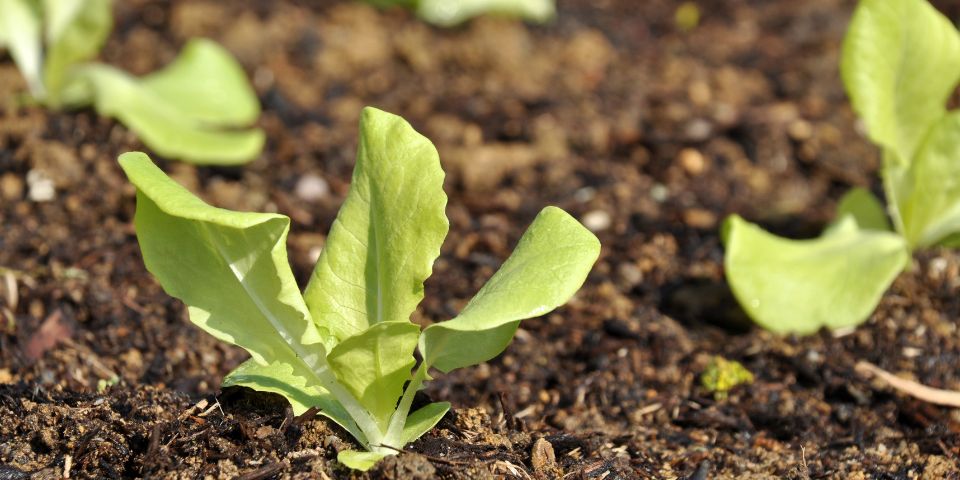January is a pivotal time for gardeners. Planning and planting begin in earnest now. It may feel like spring and summer are very far away right now, as we are in the middle of a cold snap. A great way to combat the winter dreariness is to get ready for the growing season. Get your seed starting trays ready, because you can get started now.
What to Plant in January in Your Zone
There’s not a one-size-fits-all answer about what to plant in January. Especially in winter, each zone is working on a different timeline. Since you don’t want to start your transplants too soon and have them rootbound in spring, it’s important to think ahead and consult the USDA Hardiness Zone Map to make calculations for timing your plantings. Here’s a general breakdown of what to plant in different zones. Remember that the average frost date is only part of the picture; you don’t want to plant water-loving plants in the desert without an irrigation plan, for example.
Zones 1-3: Harsh winters make January planting challenging. Focus on starting seeds indoors that will thrive in spring. Cold hardy vegetables like kale, spinach, and onions are great options. Pansies are quite cold-tolerant and are one of the first flowers you can transplant outdoors. Use grow lights and maintain consistent indoor temperatures for optimal germination.
Zones 4-5: In this zone, you’re probably seeing some real cold, but there are some milder days. It’s still too early for outdoor planting in this zone, except for those perennials like wildflowers, artichokes, rhubarb, and asparagus that require scarification or cold stratification. Now is a good time to start all of the plants mentioned for Zones 1-3, plus broccoli, Brussels sprouts, and leeks. A heated germination mat can help encourage seed growth so you’ll have strong transplants when things are warm enough to harden your seedlings off in spring.
Zones 6-7: Mild winters allow more flexibility, including planting a few crops directly outside. These gardeners can jumpstart the growing season for nasturtiums, tomatoes, peppers, eggplants, melons, and Luffa gourd by starting plants indoors. If you’re able to use cold frames or tunnels, you can also start sowing peas, pansies, parsley, cilantro, arugula, and spinach directly outside. Just keep alert for any cold snaps and protect your plants if needed.
Zones 8-9: These gardeners rarely see snow, and have relatively mild winters with a few cold spells. If this is you, you can start planting more crops outdoors. You can start planting root vegetables like carrots, beets, and radishes outdoors and avoid the heavy losses that can occur if you try to start these sensitive plants indoors and transplant them. These gardeners will enjoy a head start on summer crops, and can safely include cucumbers, squash, and okra in their January indoor sowing plans.
Zone 10: The warm climate of Zone 10 is great for starting a variety of crops, including lettuce, tomatoes, and beans. If you live in this zone, now’s your chance to consider planting those crops that can’t handle the heat of your hot summers, like lettuce, peas, cilantro, as well as non-heading cole crops like kale, mustard greens, kohlrabi, and collards. This strategy will help you enjoy fresh flavors in spring that you might not get access to otherwise.
Using Seed Starting Trays

In zones where the winter is particularly harsh, seed starting trays can be a game-changer. They are much easier to manage than individual pots, allowing you to keep your space organized and ensuring that your seedlings grow in a controlled, protected environment. Seed starting trays work well with other tools like humidity domes, heating mats, and grow lights. Starting your seeds in these trays allows for better management of soil consistency and moisture levels so that you’ll have healthy, robust seedlings that are ready to transplant once outdoor conditions improve.
Hardening Off
Remember that before you transplant your seedlings, you’ll need to harden them off. That means exposing them to outdoor conditions gradually, starting a few hours a day. Hardening off seedlings helps to prevent transplant shock and acclimatize them to harsher conditions of direct sunlight, wind, and varying temperatures. Since your seedlings will need that adjustment period, you may want to factor that into your growing schedule.
What About Winter Sowing?
Winter sowing is all the buzz right now, so let’s take a moment to discuss this technique. Winter sowing involves growing seeds outdoors in mini-greenhouses, often made of milk jugs or other recycled plastic containers with clear lids. This method relies on using outdoor conditions to help seeds germinate and to

acclimate the seedlings to outdoor conditions early. The technique is a middle ground between the controlled environment of indoor sowing and the exposure of direct sowing, offering protection while harnessing the natural rhythms of the season. It simplifies the sowing process and can lead to stronger, more acclimatized seedlings ready for spring growth. Winter sowing also allows those with limited space a chance to get a head start on gardening, even if there’s nowhere to start seeds indoors.
When deciding what plants to winter sow, consider your zone and your seeds’ requirements. Do not winter sow tropical or heat-loving plants unless you live in a warm climate without frost (Zone 10). Winter-sowing is especially effective for hardy perennials that naturally self-seed or require stratification. Echinacea (coneflowers), Blackeyed Susans, snapdragons, and many wildflowers thrive with this method. Cold-tolerant vegetables and herbs like kale, spinach, lettuce, parsley, and cilantro are good options.
January may seem cold and lifeless, but spring will be here soon. It’s the prime time to pick out your seeds. With this guide, you can even start planting now to get a head start on the growing season.

























